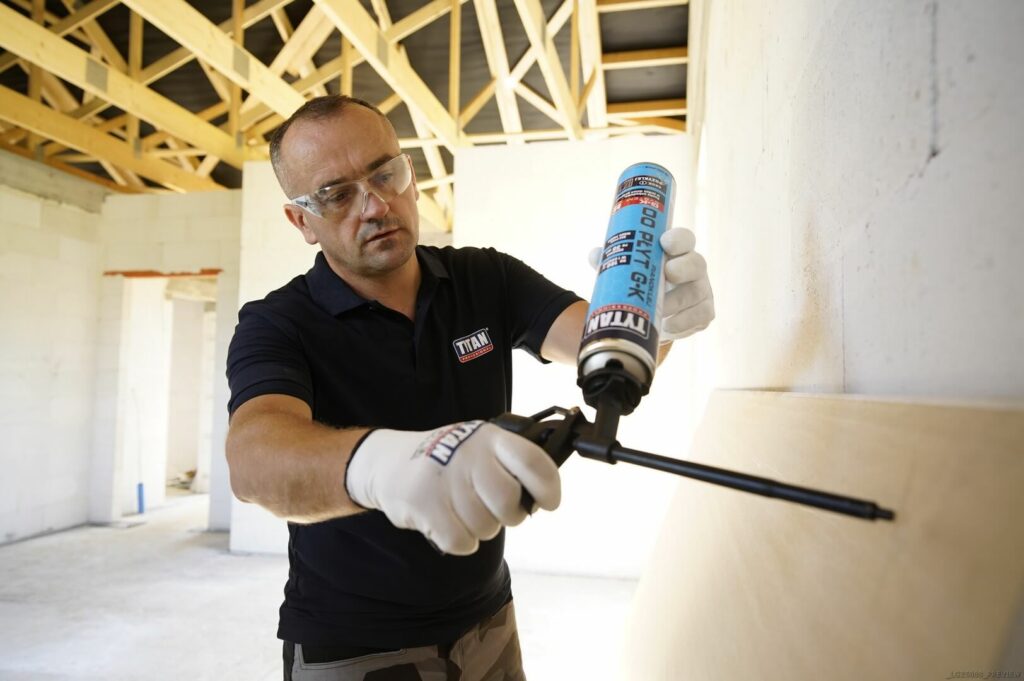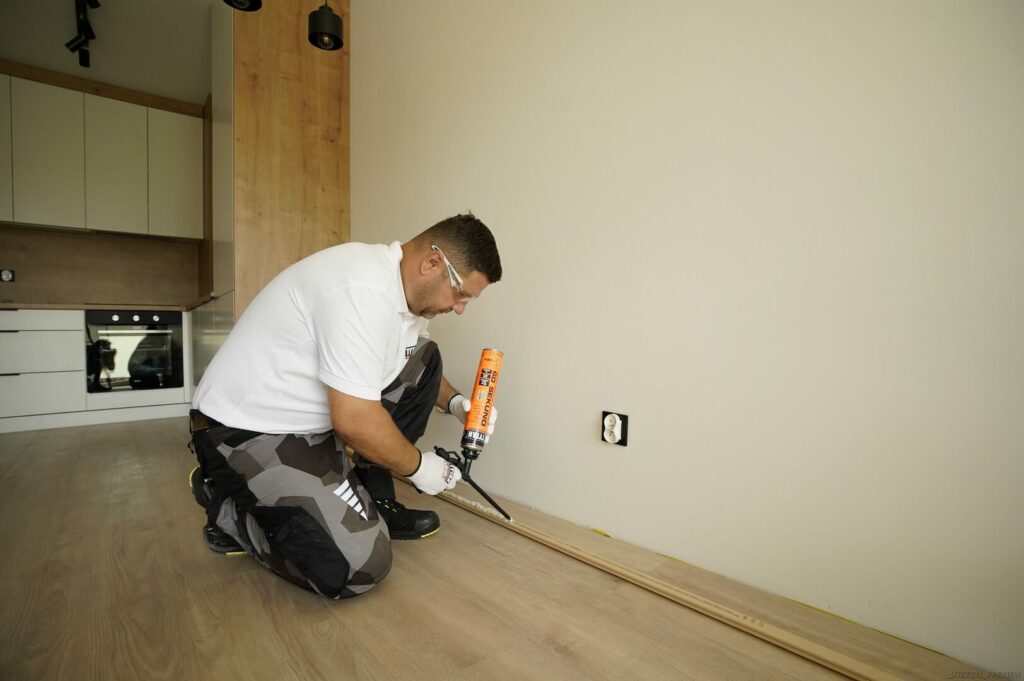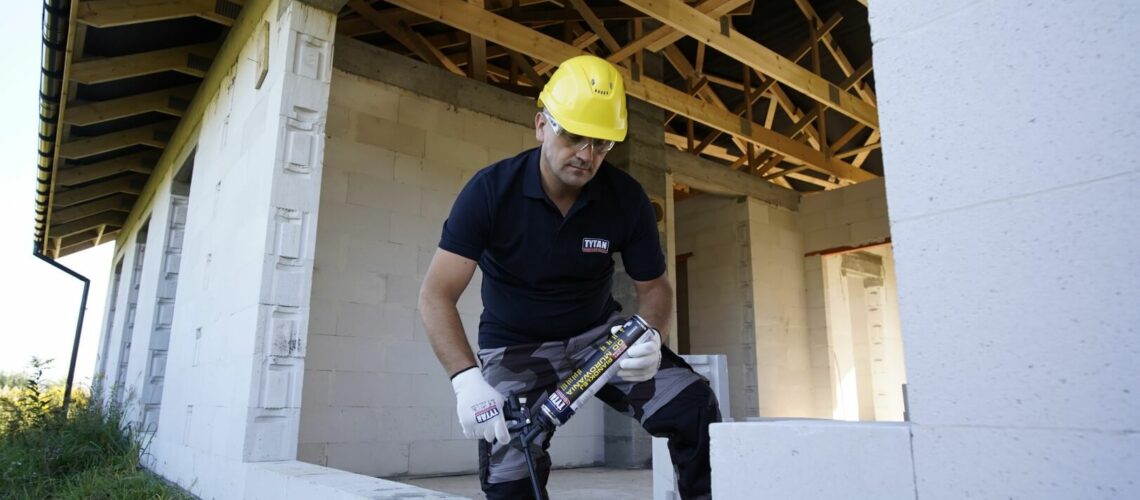Building or renovating a house is a long and arduous process. While cement and gypsum mortars remain the go-to choice for many professionals, foam adhesives offer a quick and safe alternative without compromising on the quality. Use these versatile products to ensure durability and to enjoy the built/renovated spaces for many years to come.
Foam adhesives are professional single-component polyurethane adhesives. Compared to traditional adhesives, they offer a rapid cure time, markedly higher adhesion and stronger grip. Their innovative foam form has been designed for use in sealed applications. Sold in cans, foam adhesives are applied using a gun. Their small-cell and regular structure offers excellent insulation, high resistance to deformation and durability.
For walls, facades and drywall
Foam adhesives for bricklaying can be used for TLMB autoclaved aerated concrete blocks, grinded ceramic blocks and silicate blocks. The building materials used must meet strict standards with regard to height, thickness and parallel supporting surface. Foam adhesives are ideal for the construction of external and internal load-bearing walls and partition walls.
Foam adhesives can also be used to fix plasterboard. Ideal for this purpose, the Tytan Professional® Foam Adhesive for Drywall can be used to fix plasterboard to surfaces made of plain concrete, autoclaved aerated concrete, ceramic bricks, silicate bricks, OSB/3 wood-based boards and white and graphite expanded polystyrene (EPS) boards. This solution is easier to apply than the one involving the use of the mixture of traditional gypsum mortar and water. This Tytan Professional® foam adhesive allows you to correct surfaces unevenness up to 20 mm. Corrections must be made between 2 and 5 minutes after first positioning.

The right type of foam adhesive can also be used for thermal insulation of buildings to perfectly bond together and seal the joints of polystyrene boards, preventing thermal bridges. Use the Tytan Professional® foam adhesive for thermal insulation to avoid using two different products. With foam adhesives, it is also easier to bond board to the wall. It can be cumbersome to use only cement for this purpose, as you have to apply it both in the center and around the perimeter of the board. Foam adhesives also do away with the problem of cement floating and dripping.

The ‟hybrid” method of fixing polystyrene foam is seen increasingly often on construction sites. A foam adhesive is applied around the perimeter of a piece of insulation material, with ‟dollops” cement applied in the middle. The cement stabilizes and keeps the board in place, with the foam adhesive bonding around the perimeter.
Fast and durable
Speed and high yield should go hand in hand. Foam adhesives will help you achieve just this. All you need to do before applying the product is shake the can vigorously for about 30 seconds. For TYTAN Foam Adhesive for Bricklaying, you have up to 3 minutes to make corrections. One can does the job of 50 kg of cement mortar. On top of that, foam adhesives produce no dust, so it’s easier to keep your workplace clean. And you don’t need to worry about the weather – the range of application is from -10 to +30⁰C.
The product is also more economical and environmentally friendly, with its convenience and eco-friendliness deriving from the fact that you don’t need water or electricity to use it. Also, it weighs much less, which is beneficial for health and safety.
Proper storage is key to performance
The expiry date of TYTAN foam adhesives is 12 months from the date of manufacture. The product should be stored in a dry, cool place, in original containers, ‟valve up”.
Don’t throw away partially used cans. During short breaks from work, it is recommended to tighten the valve on the gun. The container can be attached to the gun for up to 30 days, but it must be kept upright to maintain its usability. On breaks longer than 15 minutes, clean the gun nozzle with the Tytan Professional Universal Foam Cleaner and lock the trigger, leaving the can screwed on until the next use. If the foam adhesive is not used up completely, clean the can valve when you’ve done for the day. Then screw on a can with the cleaner and let its contents out until the cleaner starts to leak. Then remove it and tighten the adjusting screw.

Construction or renovation is a major undertaking, which makes it imperative to use measures and solutions to optimize their time and costs and, above all, quality. Foam adhesives make indoors and outdoors construction easier. Importantly, they also help save water and electricity, an important factor at a time when their costs are rising. Last but definitely not least, the final result is certain to last for many years.


